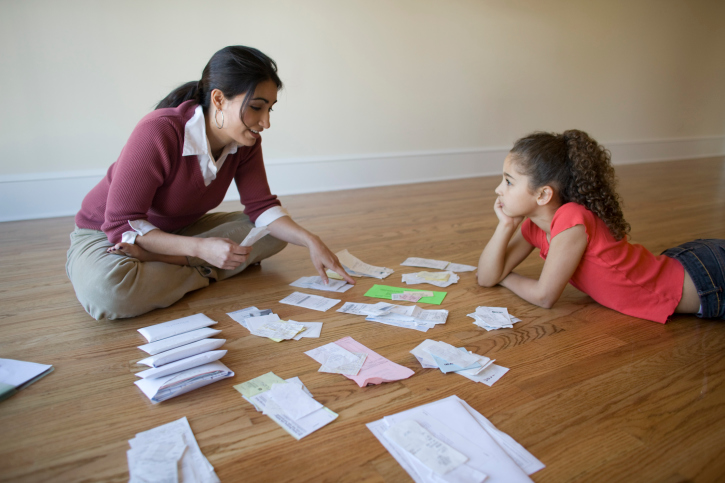How Much Should You Budget for Closing Costs? Let’s Take a Look
 If you’re in the market for a new home, you’re probably trying to budget for all of the expenses that come with a home purchase. After all, the asking price isn’t necessarily the entire amount that you’ll pay – there are other expenses that will factor in to the final price. One such expense is your closing costs.
If you’re in the market for a new home, you’re probably trying to budget for all of the expenses that come with a home purchase. After all, the asking price isn’t necessarily the entire amount that you’ll pay – there are other expenses that will factor in to the final price. One such expense is your closing costs.
Closing costs are the miscellaneous fees you’ll pay when you sign the deal to buy your home. But how much do you need to save up for closing costs? Here’s what you need to know.
The General Guideline for What to Expect
Most mortgage advisors will tell you that you should expect to pay about 3 to 5 percent of your mortgage in closing costs. By law, your mortgage provider is obligated to give you a Loan Estimate form which is designed to help you understand the key features, costs, and risks of the mortgage loan. Three business days before the loan closes your mortgage provider will also give you a Closing Estimate form to review all of the costs of the transaction including all closing costs.
How Your Closing Costs Break Down
Your lender will give you a breakdown of costs in your Loan Estimate and Closing Estimate. But in general, there are certain closing costs you can expect to pay.
One cost that most lenders include is the loan origination fee, a small charge to compensate the lender for the time it takes to prepare the initial loan documents. There will also typically be a loan application fee, which can vary per lender.
Your lender may require you to get private mortgage insurance depending on your situation. The title search and title insurance to protect your lender from title fraud is another fee you should consider, and you’ll also likely want to buy title insurance to protect yourself.
There are also several other closing costs to keep in mind, like escrow fees, notary fees, pest inspections, underwriting fees, and the mortgage broker’s commission. All in all, you’ll want to budget approximately $5,000 in closing costs for every $100,000 you borrow.
Closing costs can be quite expensive, which is why you’ll want to make sure you budget appropriately when you buy your new home. A mortgage professional can help you to figure out how much you need to budget for closing costs. Call your local mortgage advisor today to learn more about budgeting for the home buying process.

 Refinancing a home loan can provide numerous benefits, but it can also seem daunting and intimidating to some. Many homeowners would love to lower their interest rate or take advantage of other benefits associated with refinancing, but they are concerned about the time and expense associated with refinancing their current mortgage. The FHA Streamline Refinance loan program is designed to provide those who currently have an FHA loan with an easier way to refinance their mortgage, and this may be a desirable option for many.
Refinancing a home loan can provide numerous benefits, but it can also seem daunting and intimidating to some. Many homeowners would love to lower their interest rate or take advantage of other benefits associated with refinancing, but they are concerned about the time and expense associated with refinancing their current mortgage. The FHA Streamline Refinance loan program is designed to provide those who currently have an FHA loan with an easier way to refinance their mortgage, and this may be a desirable option for many. One of the most significant challenges that many people face when preparing to buy a first home relates to saving money for a down payment. While there are many different loan programs with varying down payment requirements, the fact is that it can still be difficult to save up a large sum of money. Some programs may require you to save as much as 10 percent or 20 percent of the sales price of the home.
One of the most significant challenges that many people face when preparing to buy a first home relates to saving money for a down payment. While there are many different loan programs with varying down payment requirements, the fact is that it can still be difficult to save up a large sum of money. Some programs may require you to save as much as 10 percent or 20 percent of the sales price of the home. A monthly mortgage can seem like enough of a financial responsibility on its own, but there are many factors involved in home ownership that affect its fiscal feasibility. If you’re in the market for a house and are wondering how your income will stack up against the rest of your expenses, here’s how to determine a home cost that’s reasonable for you.
A monthly mortgage can seem like enough of a financial responsibility on its own, but there are many factors involved in home ownership that affect its fiscal feasibility. If you’re in the market for a house and are wondering how your income will stack up against the rest of your expenses, here’s how to determine a home cost that’s reasonable for you. If you’re having financial troubles, or if you need to free up a large sum in a short period of time, a reverse mortgage is a great way to get the money you need without having to take on new debt or make monthly payments. When you apply for a reverse mortgage – also known as a home equity conversion mortgage – you’re essentially borrowing money from the equity you’ve built up in your house. The great advantages of a reverse mortgage are that you don’t need to make any loan payments until you decide to move out of the house and that in spite of the interest rates attached, you’ll never owe more than the value of your home.
If you’re having financial troubles, or if you need to free up a large sum in a short period of time, a reverse mortgage is a great way to get the money you need without having to take on new debt or make monthly payments. When you apply for a reverse mortgage – also known as a home equity conversion mortgage – you’re essentially borrowing money from the equity you’ve built up in your house. The great advantages of a reverse mortgage are that you don’t need to make any loan payments until you decide to move out of the house and that in spite of the interest rates attached, you’ll never owe more than the value of your home.